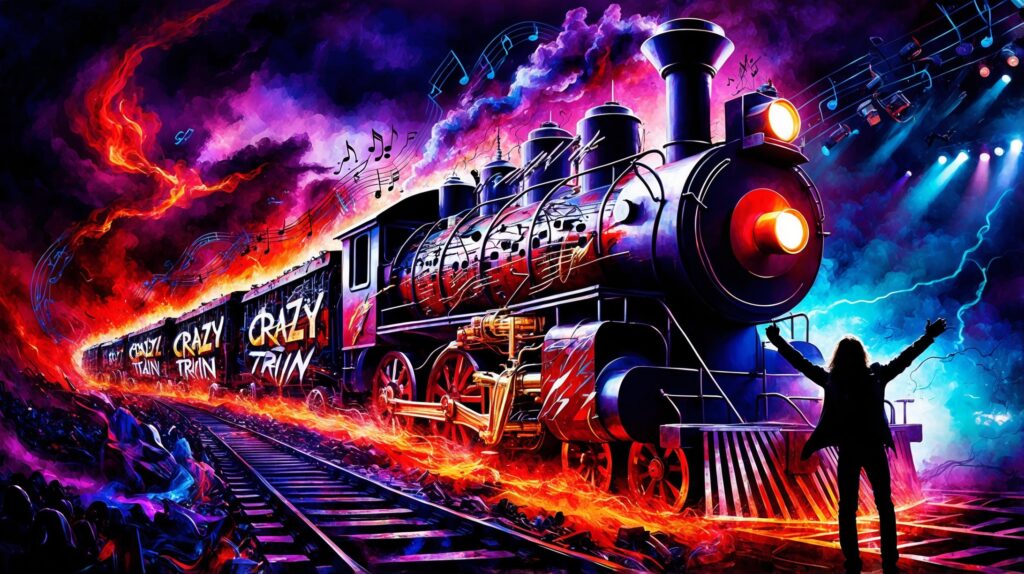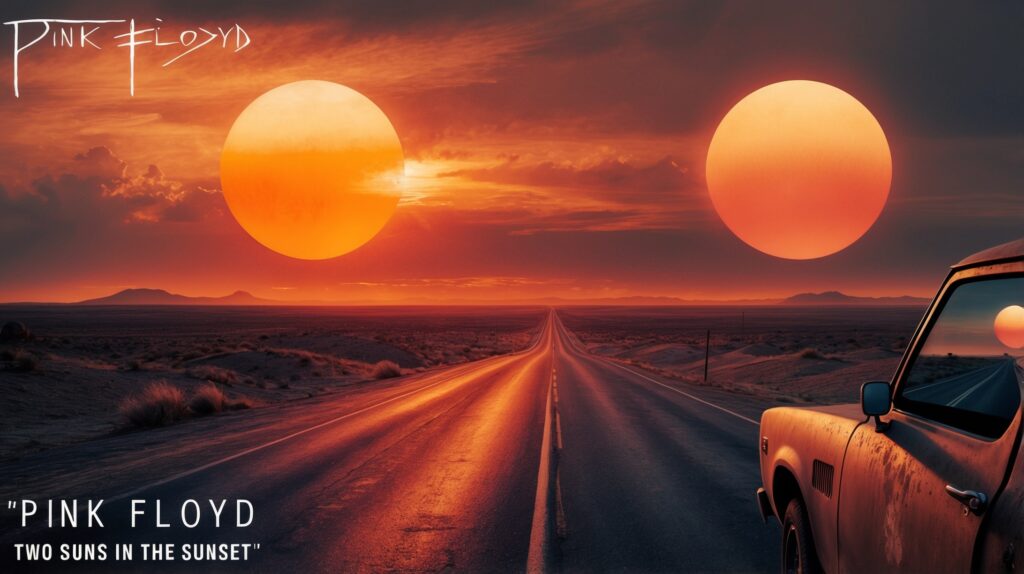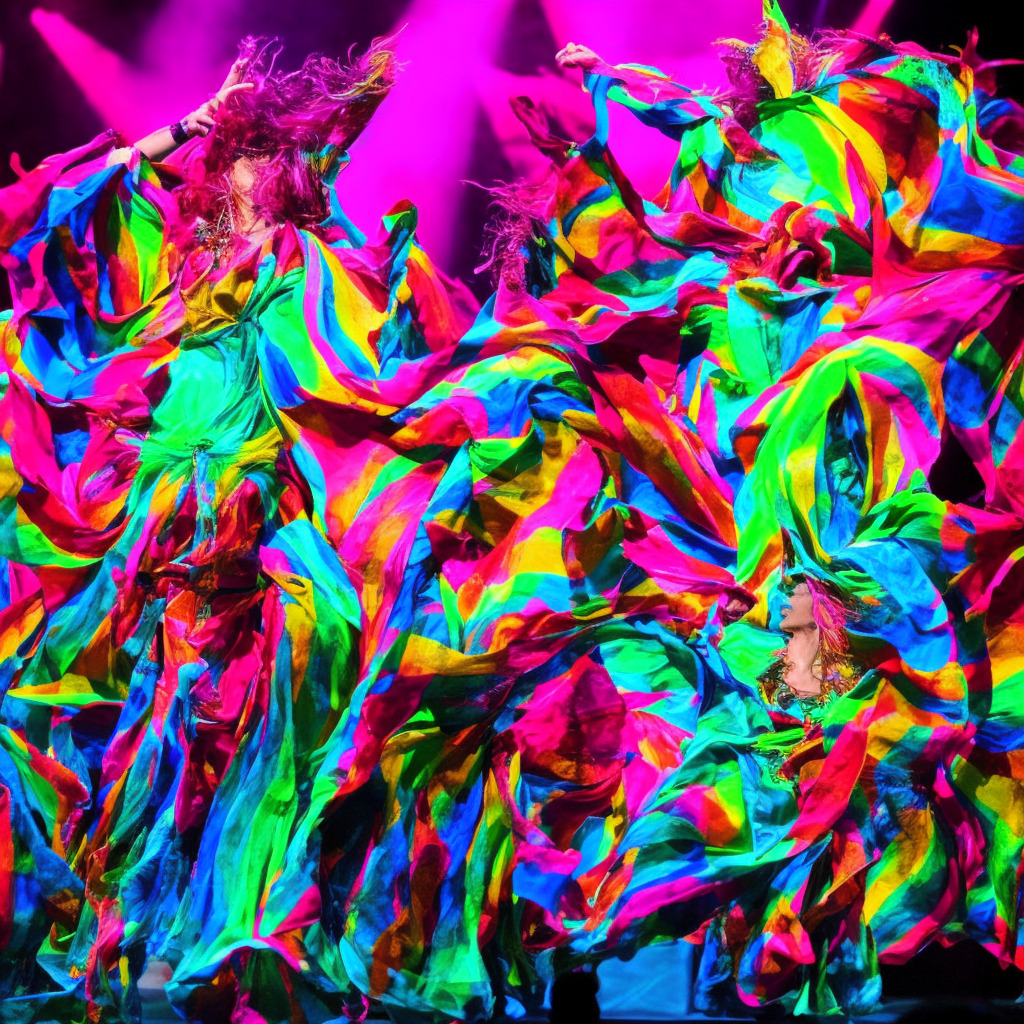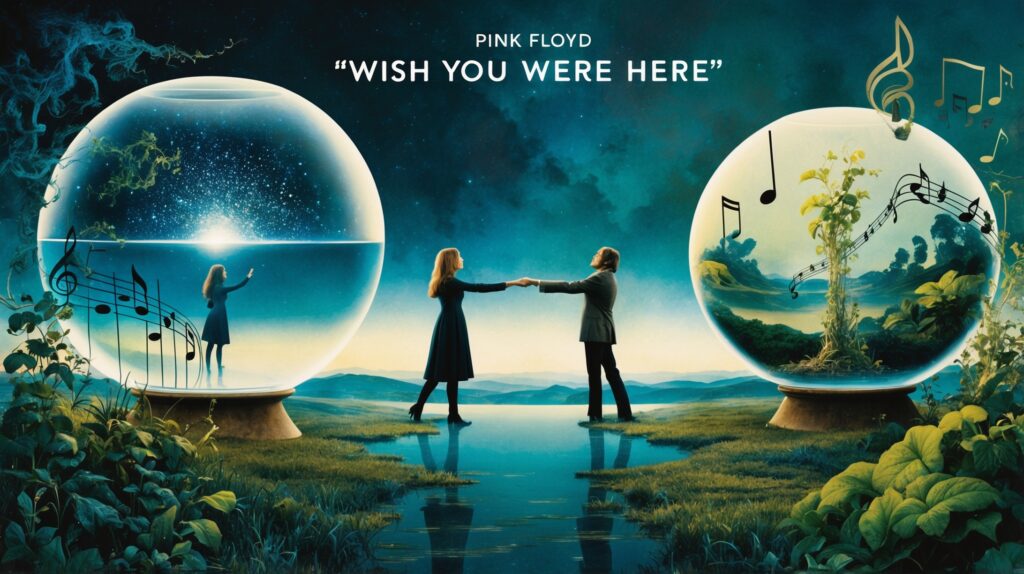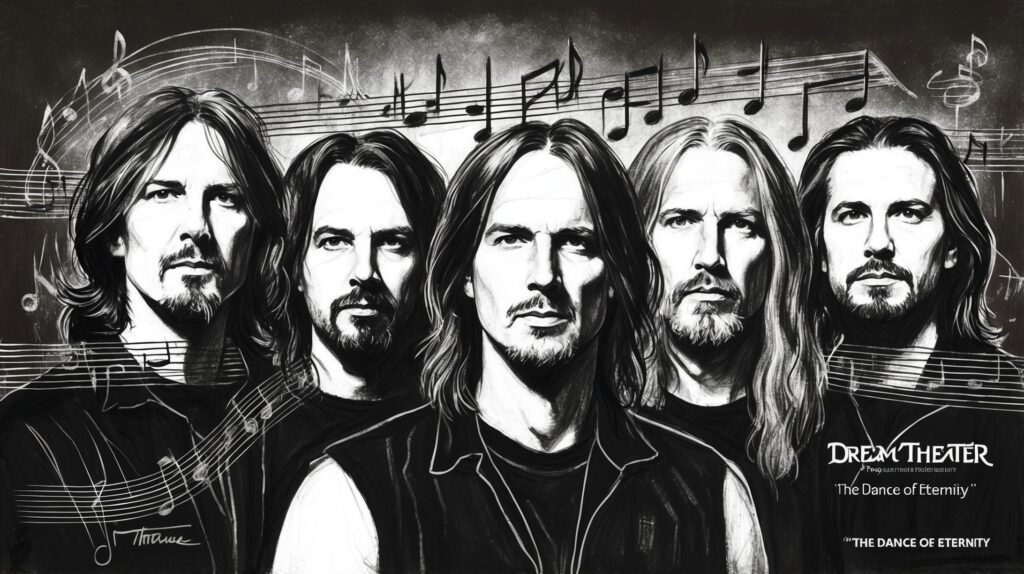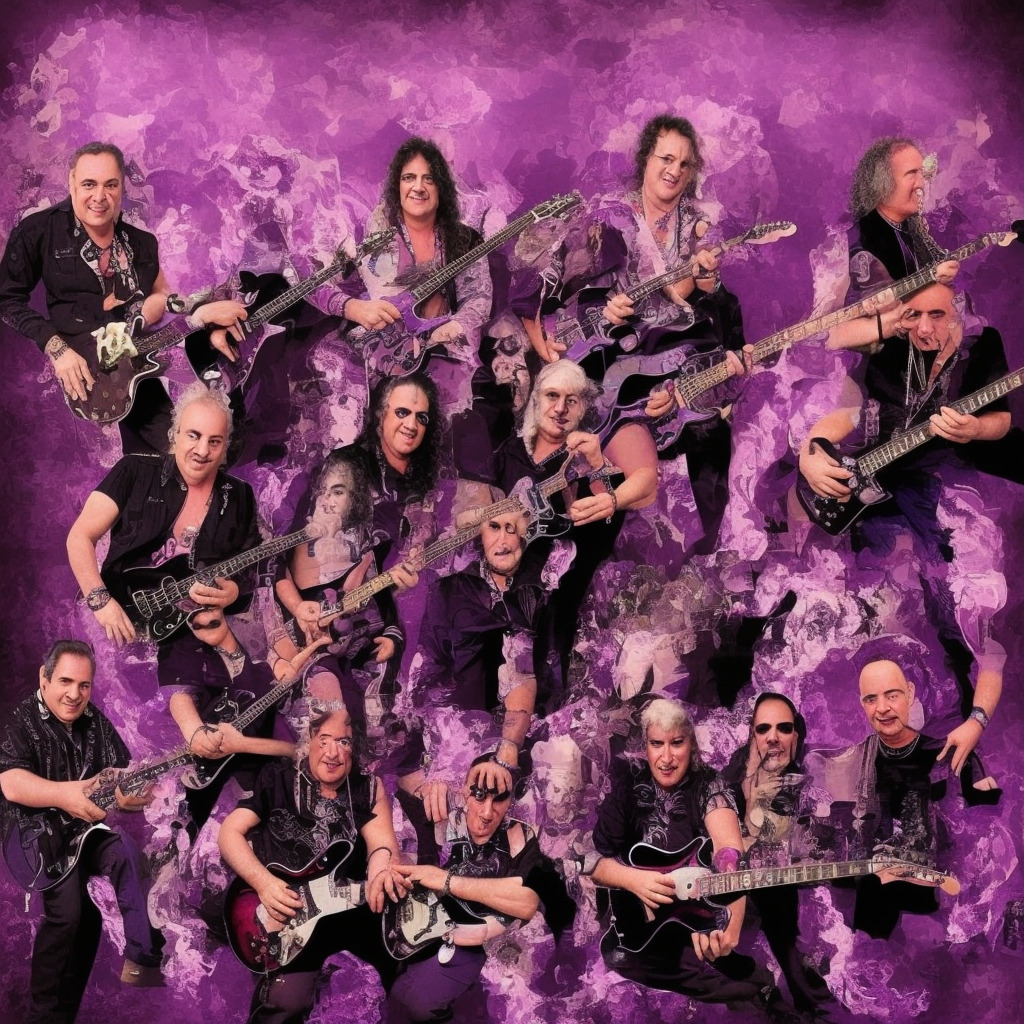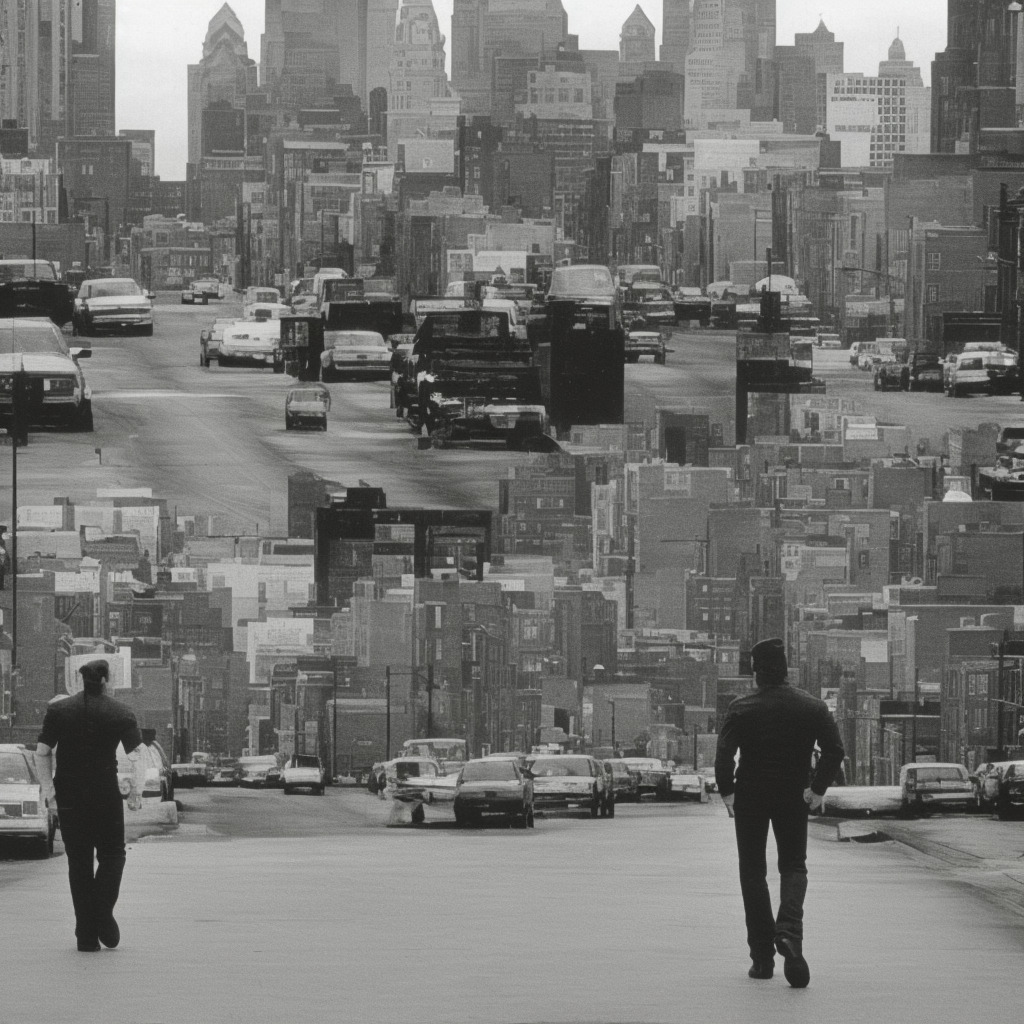A Rock Icon’s Journey: The Unstoppable Rise of Ozzy Osbourne
Ozzy Osbourne’s solo career, catapulted by ‘Crazy Train,’ showcases his resilience and innovative artistry post-Black Sabbath. His collaboration with guitarist Randy Rhoads redefined his sound, asserting his place in the heavy metal pantheon.
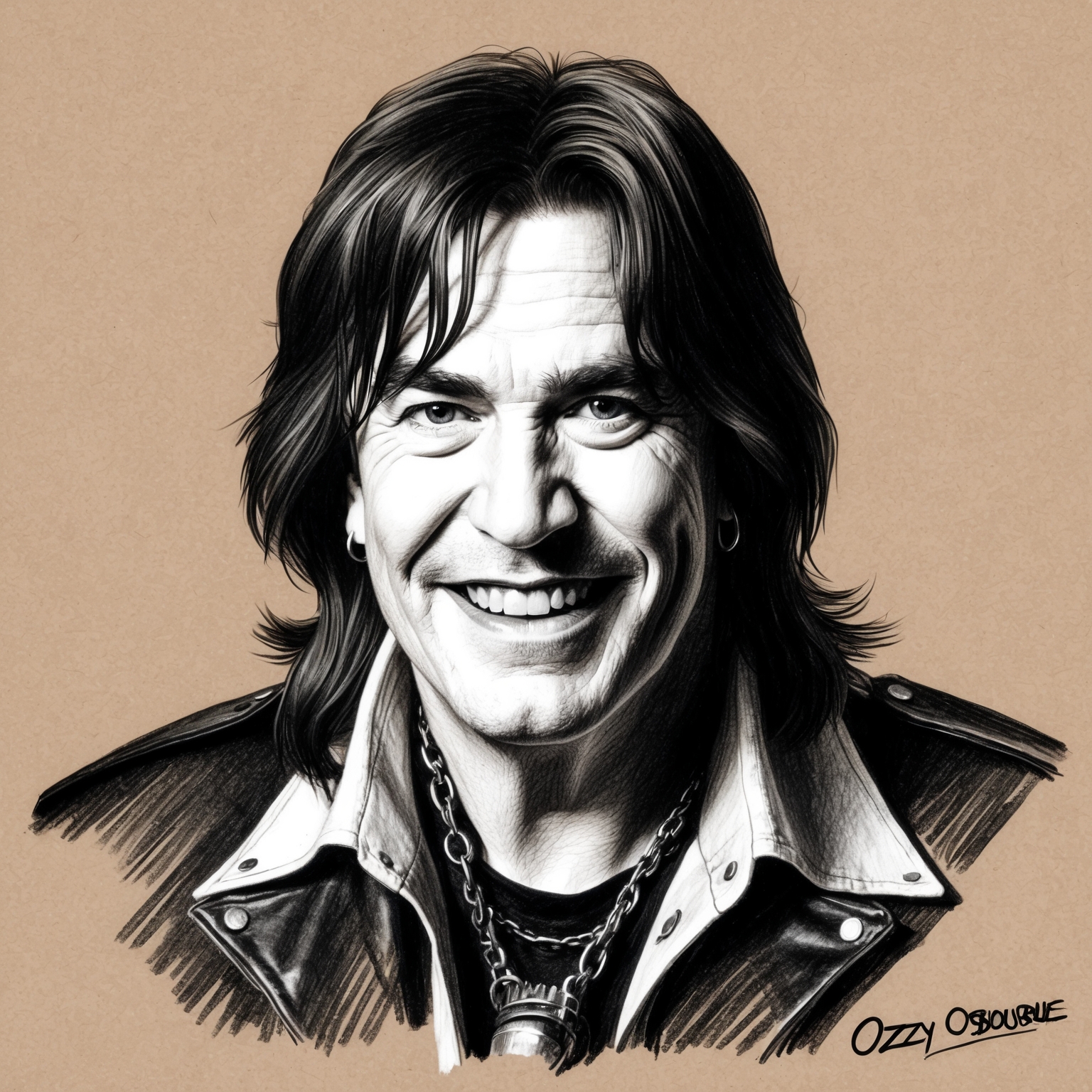
Ozzy Osbourne, often hailed as the ‘Prince of Darkness,’ is a name synonymous with the evolution of heavy metal music. The release of “Crazy Train” marked a pivotal moment in his solo career, showcasing his resilience and artistic vision following his departure from the legendary rock band Black Sabbath. The song remains one of his most iconic tracks, encapsulating the raw energy and rebellious spirit that Ozzy embodies. Its release during the early 1980s was a bold statement, solidifying his status as a solo artist capable of pushing musical boundaries.
Born in Birmingham, England, Ozzy’s early life was far from glamorous. The working-class neighborhood in which he grew up played a significant role in shaping his gritty persona and the authenticity of his music. From an early age, he was drawn to music as a form of escape, and his career began in earnest with the formation of Black Sabbath in 1968. The band’s revolutionary sound laid the foundation for what would become the heavy metal genre, with Ozzy’s distinctive vocals at its heart. Despite the immense success, creative differences and personal struggles led to his departure from the band in 1979.
The era surrounding the release of “Crazy Train” was one of reinvention and renewal for Ozzy. Teaming up with guitar prodigy Randy Rhoads, Ozzy found a creative partner who would help redefine his musical style. Their collaboration was marked by a seamless blend of traditional heavy metal and innovative guitar techniques, which set the tone for much of Ozzy’s early solo work. Upon its release, “Crazy Train” resonated deeply in a music scene hungry for innovation, establishing Ozzy as a force to be reckoned with and setting the stage for future hits and lasting influence.
The Musical Alchemy of Randy Rhoads
Explore the genius of Randy Rhoads, the mastermind composer behind ‘Crazy Train,’ whose classical training and innovative style helped shape this iconic track.
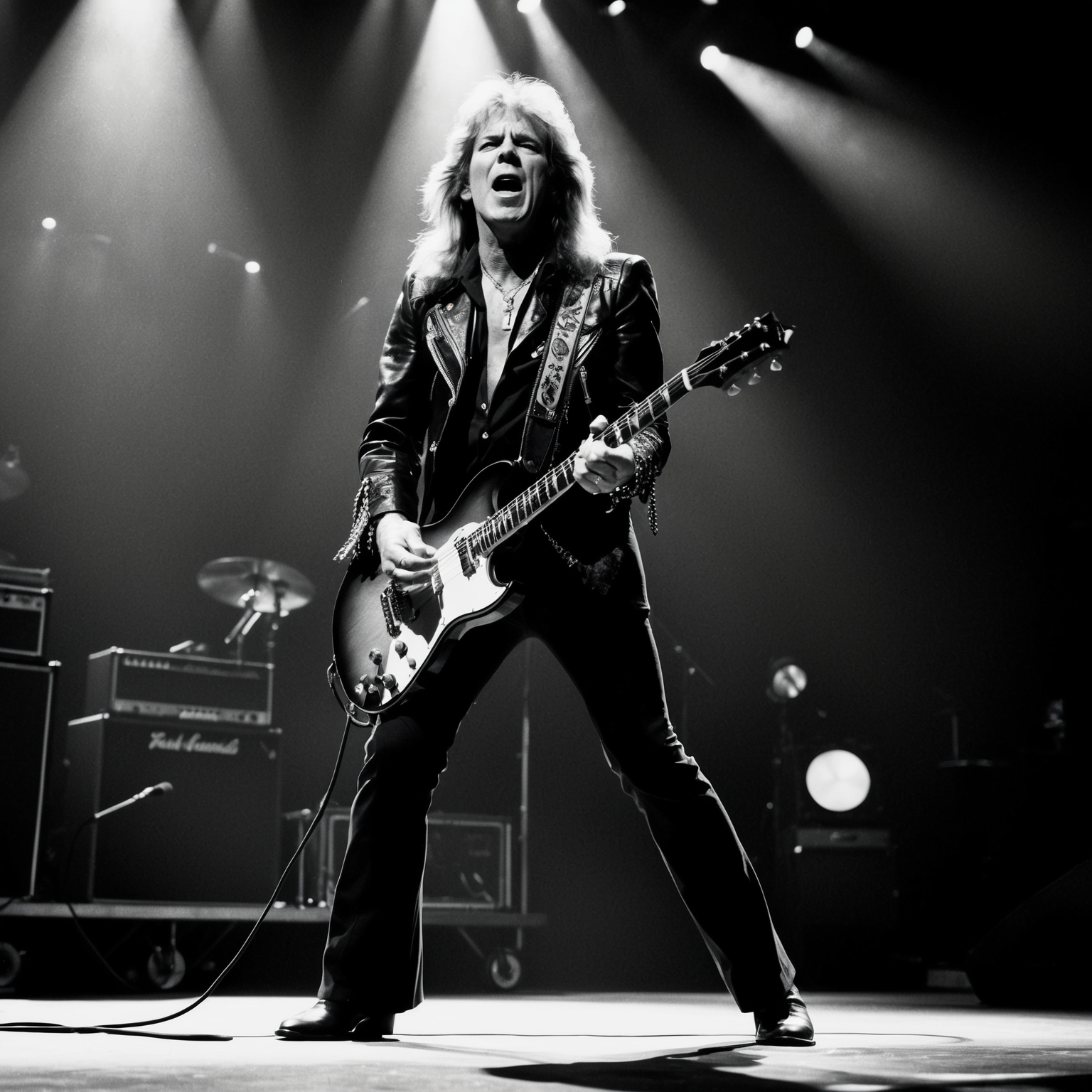
When discussing the timeless classic “Crazy Train,” it’s imperative to delve into the genius of Randy Rhoads, who was not just the guitarist but also the primary composer behind the track. Rhoads’ contribution to the song’s creation is legendary, merging his extraordinary technical expertise with a creative vision that helped shape Ozzy Osbourne’s solo sound. Rhoads’ background in classical guitar training allowed him to inject a unique style, blending classical elements with heavy metal to create a musical concoction that was both innovative and electrifying.
Randy Rhoads was born into a musical family and began his journey with music at a young age. His early exposure to classical music significantly influenced his work, providing a foundation for his intricate compositions. Before joining forces with Ozzy Osbourne, Rhoads made his mark with Quiet Riot, an experience that honed his songwriting abilities and set the stage for his groundbreaking work with Osbourne. His penchant for incorporating complex chord progressions and scales led to a distinctive sound that set him apart from his contemporaries.
One of the hallmarks of Rhoads’ composition in “Crazy Train” is its fusion of classical finesse with raw heavy metal energy. The opening riff, instantly recognizable for its electrifying appeal, sets the track’s kinetic motion. Rhoads’ role in “Crazy Train” was pivotal—in many ways, redefining metal guitar playing and influencing countless musicians for decades to follow. His interplay of guitar riffs and melodic structure not only supported but also elevated the song’s thematic intensity, contributing significantly to the track’s enduring success.
Recognizing the Impact of ‘Crazy Train’
“Crazy Train” by Ozzy Osbourne may not have traditional awards, but its wide-reaching influence is undeniable. With numerous covers spanning genres and appearances in films, TV, and games, the song’s legacy shines through its cultural impact.
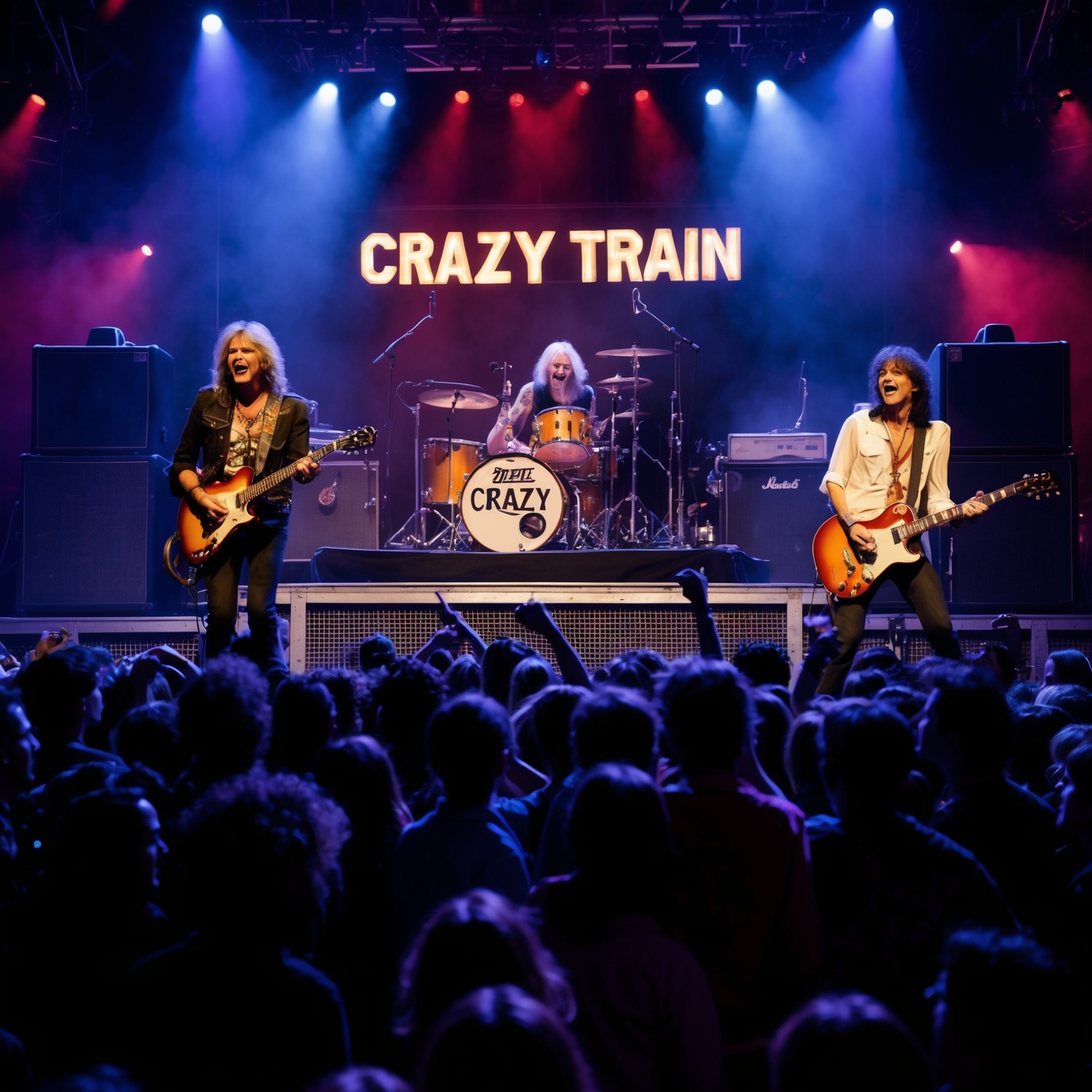
Released in 1980, Ozzy Osbourne’s “Crazy Train” has endured as one of the quintessential tracks in the rock and metal pantheon. Despite the fact that the track itself didn’t garner any direct music awards, it has achieved something more enduring: a cultural permanence. Its infectious guitar riff and Osbourne’s unique vocal delivery have made it a staple at concerts, sporting events, and pop culture moments worldwide.
In terms of covers, “Crazy Train” has attracted a wide array of artists from various genres, eager to reinterpret its driving momentum and iconic sound. Bands like Bullet for My Valentine have delivered heavy metal renditions, while other artists such as Pat Boone gave it a surprising twist, turning the rock anthem into a swing jazz number. Each reinterpretation brings out a new flavor, demonstrating the song’s versatility and widespread appeal.
Beyond live performances and covers, “Crazy Train” has also thrived through its appearances in various media. It has been featured in multiple films, television shows, and video games, thereby extending its reach beyond just music fans. Memorable uses include its presence in the cult classic movie ‘Madden NFL 10’, where it’s used to amp up on-screen intensity. All these factors contribute to its accolades, not through trophies or conventional awards, but through sustained relevance and influence in popular culture.
Riding the Rails of Popularity: Chart Success of ‘Crazy Train’
Crazy Train’ achieved enduring chart success and popular acclaim, marking a significant milestone in Ozzy Osbourne’s solo career. Its iconic riff and energetic vibe made it a standout hit despite fierce competition, cementing its legacy in rock history.
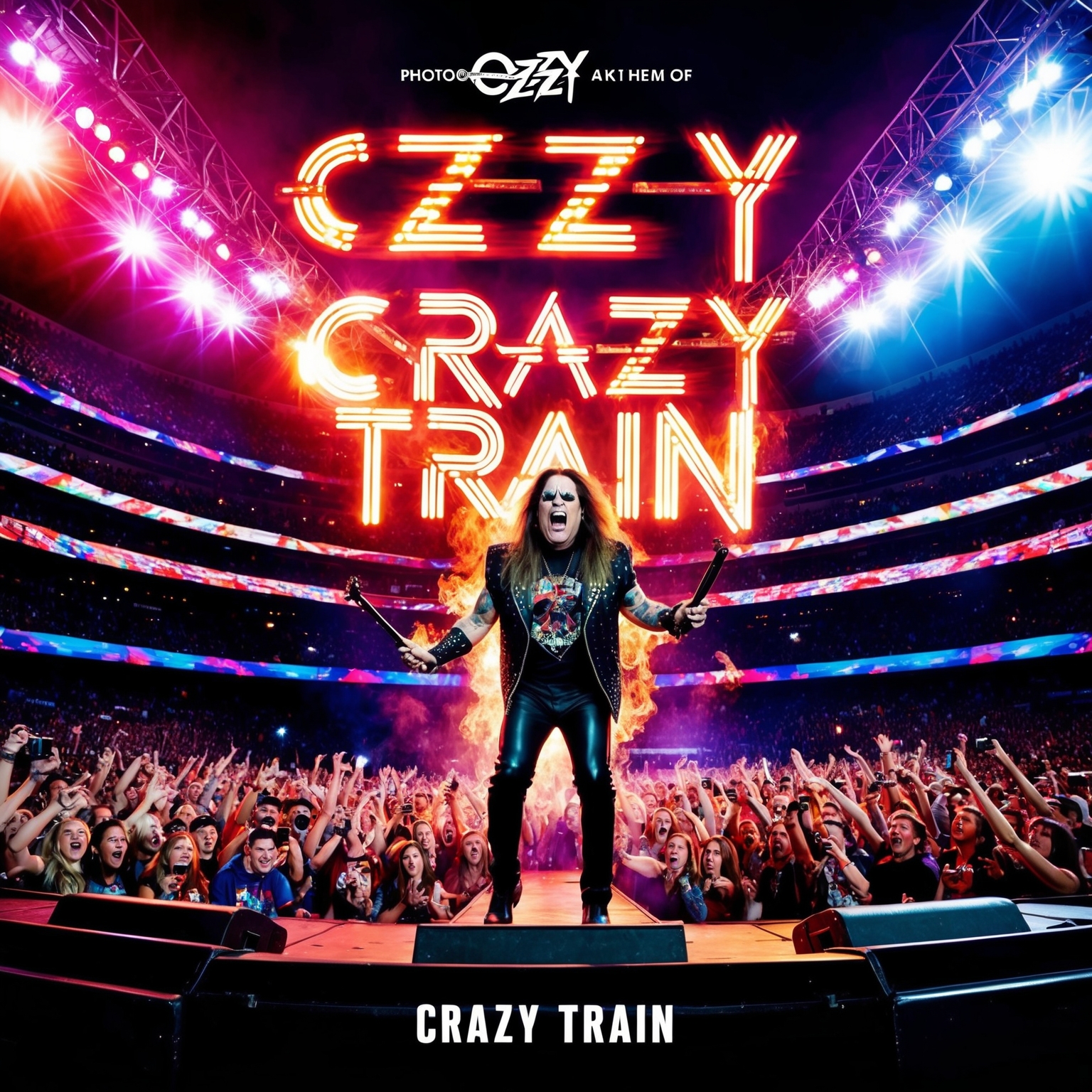
‘Crazy Train’, released on November 1, 1980, marked a defining moment in Ozzy Osbourne’s solo career. Rising swiftly and unexpectedly, the song debuted across the globe with mixed receptions depending on the region. In the UK, the track initially didn’t make it to the top of the charts, but its impact grew steadily over time, eventually peaking at number 49 on the Japan Oricon Sales Chart and achieving considerable success in the United States and Canada. Notably, ‘Crazy Train’ has achieved platinum status in the US, a testament to its enduring popularity.
Compared to Other Chart Hits
In comparison to the other chart-toppers of the early ’80s, ‘Crazy Train’ managed to hold its distinct persona amidst the wave of new wave and pop tracks dominating the airwaves. While it didn’t initially climb to the number one spot, its performance was robust given the competitive landscape of the time, marking it as a standout rock anthem of its era. This achievement was pivotal for Ozzy, as it reaffirmed his ability to remain a force in the music industry despite the departure from Black Sabbath.
Marketing and Public Impressions
The song’s promotion leaned heavily on Ozzy’s established reputation, coupled with intriguing stories from live performances. The label focused on the raw energy of the track, aligning promotional efforts with Osbourne’s larger-than-life persona. Public and critical reception was overwhelmingly positive, with the song’s infectious guitar riff and catchy lyrics earning praise from rock critics and fans alike. Over time, ‘Crazy Train’ has become more than just a song; it’s a cultural staple, frequently referenced and beloved across generations. Today, its influence can be felt in its frequent usage in commercials, sports, and various media, solidifying its status as an enduring symbol of rock resilience.
Imagining the Visual Legacy of ‘Crazy Train’
Crazy Train’ lacks an official video, but fan-made videos and thrilling live performances creatively capture its energetic spirit, preserving its visual legacy.

While ‘Crazy Train’ by Ozzy Osbourne doesn’t have an official music video released in alignment with the song’s debut, its legacy still rides on the energy waves of visual creativity through fan-made videos and electrifying live performances. Ozzy’s live renditions are packed with powerful visuals that mix extravagance and intensity—characteristics that vividly bring the electrifying chaos of ‘Crazy Train’ to life. The live performances emphasize wild stage antics and an electric atmosphere, providing a sight to behold for audiences worldwide.
Fan videos over the years have creatively pieced together montages that capture the spirit of the 1980s and the explosive energy that ‘Crazy Train’ carries. These fan contributions often illustrate key themes from the song, such as madness and chaotic journeys, through dynamic animations or compiled classic rock footage that echoes Osbourne’s theatricality.
The absence of an official music video for ‘Crazy Train’ hasn’t dampened its popularity whatsoever. Its influence continues to resonate in part due to these imaginative interpretations, contributing to the song’s enduring appeal. Additionally, Ozzy Osbourne’s dynamic presence during live shows—replete with dramatic lighting and stage design—plays a critical role in visual storytelling, ensuring that every performance elevates the musical experience.
Harmonizing Chaos: The Musical Tapestry of ‘Crazy Train’
Dive into the musical structure of Ozzy Osbourne’s ‘Crazy Train,’ from its key and tempo to its intricate guitar riffs and rhythm. Discover how this iconic song fits into Ozzy’s illustrious discography and the tales behind its recording.
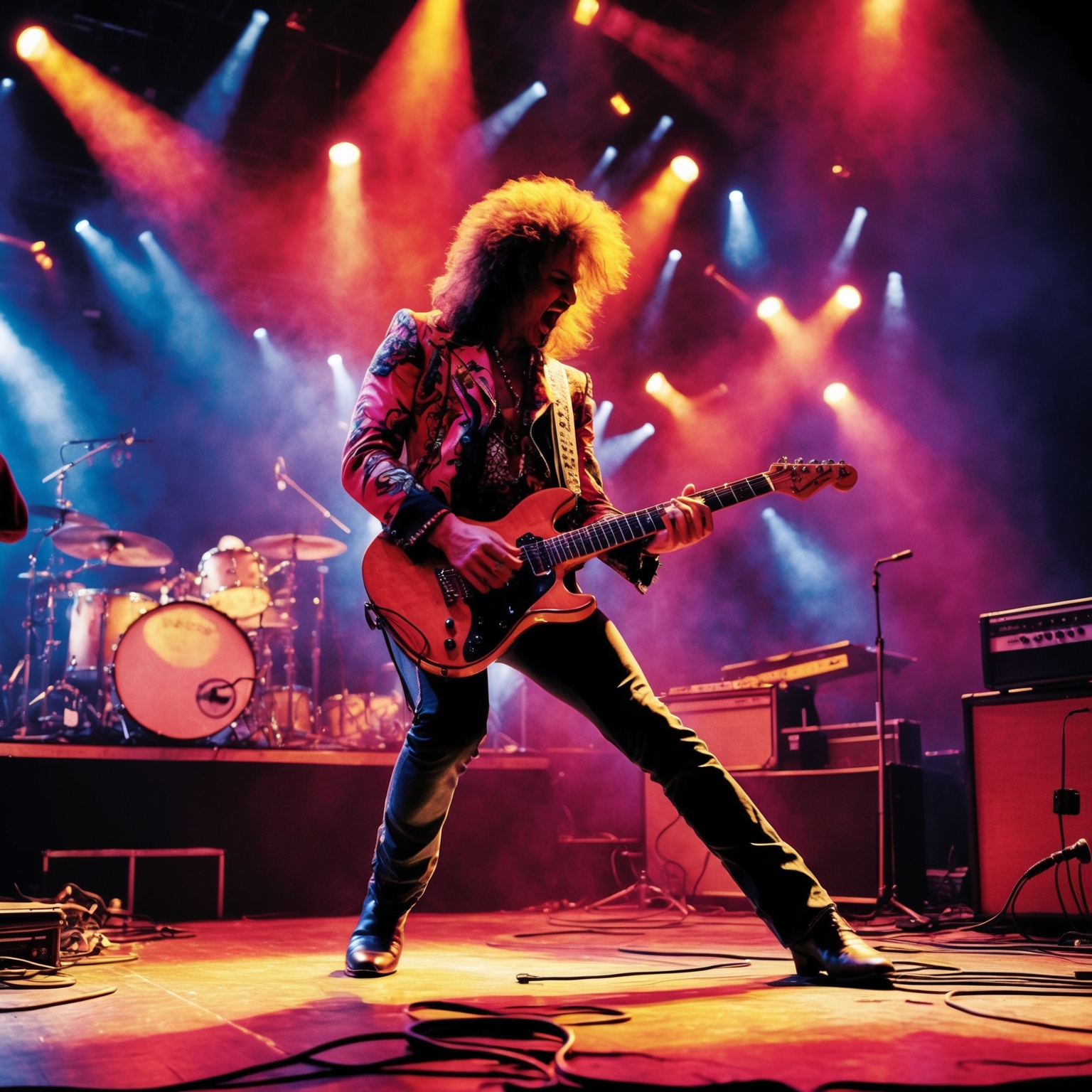
“Crazy Train” is a rock anthem that beautifully encapsulates the energy and chaos characteristic of Ozzy Osbourne’s solo work. The song is written in the key of F-sharp minor, a key that brings out its darker, more intense tonal quality, aligning with the shock rock aura Ozzy is known for. The characteristic chugging riff, composed by legendary guitarist Randy Rhoads, plays a pivotal role in establishing the song’s distinctive sound and mood.
The song’s chord structure follows a fairly traditional rock pattern but is accentuated by Rhoads’ unique approach to guitar layering, incorporating classical music influences. The tempo of the song is set at a brisk 138 beats per minute, propelling the listener headlong into its high-octane ride.
When examining the melody and harmony, “Crazy Train” employs a mix of diatonic and chromatic harmonies to weave a complex musical tapestry that underlines the lyrical themes of insanity and societal apathy. The rhythm section, driven by electric guitars, bass, and pounding drums, adds to the powerful forward momentum, enhancing the sensation of a runaway train.
“Crazy Train” stands out in Osbourne’s discography for its technical sophistication and innovative sound. Compared to his earlier work with Black Sabbath, this song showcases a leap towards a more polished production style with a cleaner mix, reflecting both the evolution of the band and the influence of the 1980s rock scene.
The recording of “Crazy Train” took place at Ridge Farm Studio in England, with producer Bob Daisley contributing to its layered sound. Anecdotes from the recording sessions highlight the creative synergy between Osbourne and Rhoads, whose guitar work has become legendary, adding an extra layer of intrigue to this timeless classic.
Delving Into the Chaos: Lyrical Themes and Messages in ‘Crazy Train’
Crazy Train’ dives into themes of chaos and social conflict, with a narrative style that creates a personal connection. The use of literary devices like metaphors enhances its emotional resonance.
Ay, ay, ay, ay, ay, ay, ay…
Crazy, but that’s how it goes
Millions of people living as foes
Maybe it’s not too late
To learn how to love and forget how to hate
Mental wounds not healing
Life’s a bitter shame
I’m going off the rails on a crazy train
I’m going off the rails on a crazy train
…
******* This Lyrics is NOT for Commercial use *******
 Ozzy Osbourne’s ‘Crazy Train’ offers a compelling exploration of themes that many listeners find deeply relatable. One of the central themes is the sense of chaos and uncertainty, aptly reflected in the recurring refrain of ‘going off the rails.’ This line metaphorically captures a feeling of being overwhelmed by disorder, resonating with those who have felt their lives spiraling out of control. The lyrics touch upon social issues, with lines like “Millions of people living as foes” highlighting the pervasive conflict in society and hinting at Osbourne’s desire for unity and understanding—a theme quite relevant to the late 20th century, and still pertinent today.
Ozzy Osbourne’s ‘Crazy Train’ offers a compelling exploration of themes that many listeners find deeply relatable. One of the central themes is the sense of chaos and uncertainty, aptly reflected in the recurring refrain of ‘going off the rails.’ This line metaphorically captures a feeling of being overwhelmed by disorder, resonating with those who have felt their lives spiraling out of control. The lyrics touch upon social issues, with lines like “Millions of people living as foes” highlighting the pervasive conflict in society and hinting at Osbourne’s desire for unity and understanding—a theme quite relevant to the late 20th century, and still pertinent today.
The narrative within ‘Crazy Train’ is delivered through a first-person perspective, emphasizing personal struggle and disorientation. This narrative style invites listeners into Osbourne’s introspective journey, fostering a profound emotional connection. The haunting opening ‘All aboard! Ha ha ha ha ha ha haaaa!’ sets the stage for a ride of introspection, underscoring the unpredictable nature of life and human emotions.
Osbourne’s use of literary devices further enriches the lyrical experience. Metaphors like ‘mental wounds not healing’ poetically convey long-lasting emotional scars, while the imagery of a train going off the rails serves as a vivid symbol of losing control. This masterful use of language amplifies the song’s emotional impact, transforming personal turmoil into a universal dialogue. Ozzy’s lyrics in ‘Crazy Train’ can be compared with other works like Black Sabbath’s ‘Paranoid,’ which similarly dissect themes of mental struggle. However, ‘Crazy Train’s’ impactful chorus and metaphorical depth offer a unique take on these timeless themes.
Did you know? 🎸 Crazy Train was Ozzy Osbourne’s debut solo single & features a legendary guitar riff by Randy Rhoads! All aboard the rock’n’roll express! 🤘🚂 #CrazyTrain #OzzyOsbourne #RockLegend 🌟 https://bit.ly/3CdFJTi
Click to Tweet

